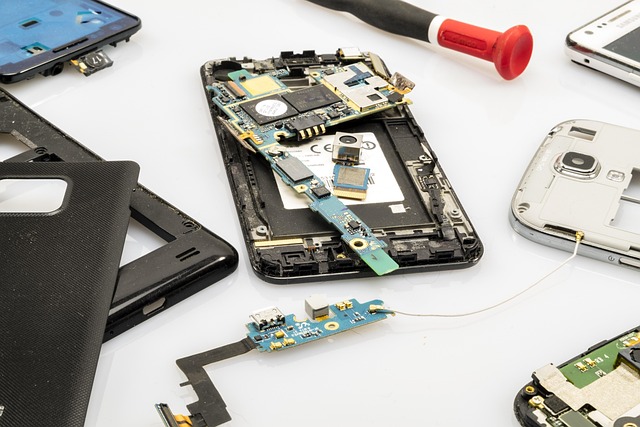Concrete slabs crack due to temperature fluctuations, soil changes, structural stress, and incorrect installation. Sealing prevents water damage, enhances durability against weather, and improves aesthetics. Use epoxy for bonding in high-traffic areas or polyurethane for outdoor spaces prone to thermal expansion. Clean, prepare, apply epoxy, then sealer. Proper surface preparation and sealer selection are key to preventing future crack repairs. Regularly inspect and maintain sealed slabs by cleaning and reapplying sealer every few years. Case studies show sealing's effectiveness in commercial and residential settings, improving concrete durability and protection against cracks and moisture intrusion.
Concrete slab cracks can weaken structures and lead to costly water damage. Understanding these cracks and their causes is the first step towards effective repair. This comprehensive guide delves into the world of concrete slab sealing, exploring its numerous benefits beyond crack prevention. We’ll navigate choosing the right sealant, mastering the crack repair process, avoiding common mistakes, and maintaining sealed slabs. Additionally, real-world case studies highlight successful projects, offering valuable insights for tackling crack repairs head-on.
Understanding Concrete Slab Cracks and Their Causes

Concrete slabs, despite their strength, are susceptible to cracks over time due to various factors. Understanding these causes is essential for effective crack repair and prevention. One primary reason is movement and settlement of the slab itself. This can occur due to fluctuations in temperature, which cause the concrete to expand and contract, or because of changes in soil conditions beneath the slab, leading to shifting and uneven settling.
Another common cause is structural stress resulting from heavy loads or improper construction. Overloading can exert excessive pressure on the concrete, causing it to crack under the strain. Additionally, poor initial installation, including incorrect mixing ratios or inadequate finishing, can weaken the concrete’s integrity, making it more prone to cracking over time. Identifying these causes is crucial for successful crack repair and ensuring the longevity of the concrete slab.
Benefits of Sealing: Preventing Water Damage & More

Sealing concrete slabs offers a multitude of benefits beyond just aesthetics. One of the most significant advantages is its ability to prevent water damage, which can be a major issue for both residential and commercial properties. Cracks in concrete, no matter how small, can allow water to seep in, causing moisture problems that lead to mold growth, structural weaknesses, and even unsafe living conditions. By sealing these cracks through professional crack repair services, you create a protective barrier that keeps water out and prolongs the lifespan of your concrete surfaces.
Additionally, sealing provides a high-gloss finish that enhances the overall look of your property. It also improves durability by shielding against harsh weather conditions, including UV rays from the sun and extreme temperatures. This protection prevents the concrete from fading, flaking, or cracking further, ensuring it remains strong and attractive for years to come. Regular sealing is a smart investment in maintaining your property’s value and appeal.
Choosing the Right Sealant for Your Slab

When it comes to concrete slab sealing, selecting the appropriate sealant is a crucial step in ensuring long-lasting protection. The market offers various options tailored for different purposes. For instance, epoxy-based sealants are ideal for repairing cracks and providing an excellent bond, making them suitable for high-traffic areas. On the other hand, polyurethane sealers offer flexibility and resistance to moisture, perfect for outdoor slabs or spaces prone to thermal expansion.
Consider your specific needs when choosing a sealant. If you’re primarily focused on preventing crack repair, opt for a flexible sealant that can move with the concrete. For aesthetic purposes or to create a smooth surface, choose a sealant that fills and levels any existing cracks. Always read product labels and consult manufacturers’ guidelines to make an informed decision based on your slab’s requirements.
Step-by-Step Guide to Crack Repair Process

To begin your crack repair process, gather the necessary tools and materials—a wire brush, concrete cleaner, epoxy, a putty knife, and a sealer. Start by cleaning the cracked area thoroughly to remove any loose debris or contaminants using the wire brush and concrete cleaner. Ensure the surface is dry before proceeding.
Next, apply the epoxy using the putty knife, filling the crack with a thin but adequate layer. Smooth the surface for an even finish and allow it to cure completely according to the manufacturer’s instructions. Once cured, apply the sealer to provide long-lasting protection against moisture penetration and further damage, thereby extending the life of your concrete slab.
Common Mistakes to Avoid During Slab Sealing

When sealing a concrete slab, there are several common mistakes to avoid that can compromise the effectiveness of the process and lead to future issues like crack repair. One of the primary errors is not properly preparing the surface. Concrete must be clean, free from debris, and slightly damp before applying any sealer. Neglecting this initial step results in a poor bond between the sealer and the slab, reducing its longevity.
Another mistake is selecting an incorrect sealer for the job. Different sealers are designed for various purposes; some protect against moisture, while others prevent chemical stains or enhance durability. Using a sealer not suited to your specific needs can lead to premature failure and increased crack repair costs down the line. Always consider factors like climate, traffic, and desired protection when choosing a concrete slab sealer.
Maintenance Tips for Longevity After Sealing

After sealing your concrete slab, proper maintenance is key to ensuring its longevity and preserving the protective barrier. Regular inspection is crucial; keep an eye out for any signs of damage, cracks, or moisture seepage. Promptly addressing issues like cracks, no matter how small, through crack repair techniques recommended by professionals, will prevent further deterioration.
Consider incorporating a maintenance schedule into your routine, including cleaning the slab regularly to remove dirt and debris that could affect the seal. Additionally, applying a new coat of sealer every few years, as per the manufacturer’s instructions, will ensure optimal protection against elements like UV rays, chemicals, and extreme temperatures, thereby extending the life of your sealed concrete.
Case Studies: Successful Slab Sealing Projects

Concrete slab sealing isn’t just about aesthetics; it’s a robust solution for crack repair and long-term protection. Case studies from various projects highlight its effectiveness. For instance, a commercial warehouse in a humid climate saw significant benefits after implementing a specialized sealer. Over time, the sealer prevented new cracks from forming and protected against moisture intrusion, leading to a more durable concrete surface.
Another successful project involved sealing a residential garage floor. The homeowner noticed deep cracks and stains due to years of use and environmental factors. By applying a high-quality slab sealer, not only were the existing cracks filled, but the sealer created a protective barrier against oil stains and other common garage contaminants, restoring the floor to its original condition.
